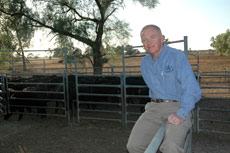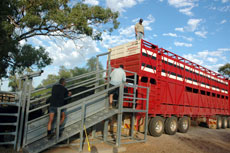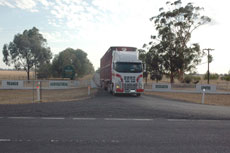
Trangie cows go west

One hundred and twenty heifers bred at Trangie Agricultural Research Centre are making the journey to the other side of the country this week as part of a unique beef research project that spans some 3700 kilometres from NSW to Western Australia.
NSW Department of Primary Industries (DPI) researchers are sending specially bred feed efficient Angus heifers to Western Australia to undergo a series of trials to demonstrate the merits of breeding livestock for enhanced feed efficiency and productivity traits.
The NSW DPI/Beef CRC research project is the only one of its type in the world and this latest milestone marks 14 years since the project began at Trangie, according to NSW DPI beef researcher, Dr Robert Herd.

“By measuring the feed intake, growth rate and size of each animal we are able to calculate stock’s efficiency at transferring feed into beef and how this contributes to the productivity and profitability of the herd and the overall grazing system,” Dr Herd said.
“This project is delivering a wealth of information on breeding feed efficient cattle and how commercial beef producers can achieve maximum results through clever genetic selection.
“For the next five years the heifers will be fed high and low nutritional treatments for evaluation of their maternal productivity as well as how improved feed efficiency genetics increases productivity from pastures.
“We expect the results to show that the animals bred for high efficiency are more productive than those with the genetics for low efficiency – high feed efficient animals maintain high productivity despite less feed intake.
“As a result, these animals will be able to maintain condition and liveweight in both good and bad seasons and also consistently produce a heavier calf compared to their less feed efficient cousins.”

The Western Australian component of the research will take part in Vasse, where the herd will be managed under a rotational grazing system by the Western Australia Department of Agriculture.
“Here the heifers will be joined and closely monitored throughout pregnancy and as cows-with-calves-at-foot over the next five years,” Dr Herd said.
“As part of the maternal productivity trial the effects of body composition on cow productivity when different nutritional regimes are imposed will be examined.”
Media contact: Brett Fifield 6391 3311 or 0427 029 511.
For digital images email brett.fifield@dpi.nsw.gov.au
Email:

